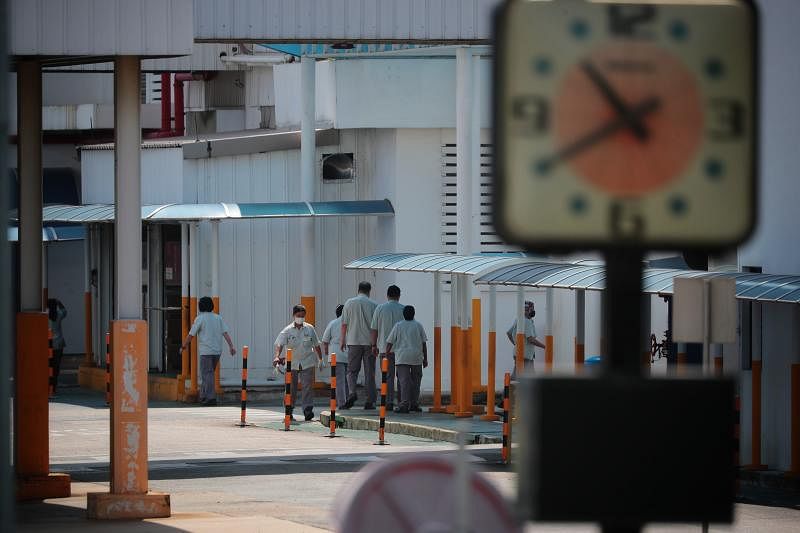Panasonic retrenches 700 in S'pore, to shut some manufacturing operations but R&D to remain here
SINGAPORE – Electronics giant Panasonic is shutting down its refrigeration compressor manufacturing operations in Singapore, resulting in the layoff of some 700 workers.
However, its global headquarters for the refrigeration compressor business and research and development (R&D) activities will remain in Singapore, the firm said in a statement to The Straits Times.
It added that Singapore remains a regional and important hub for the company, with its group of companies continuing to have more than 1,400 employees across various business segments.
The layoffs represent about one-third of its total workforce here where the Japanese company’s Asia Pacific headquarters are located.
The decision comes amid the challenging global business outlook and following the firm’s strategic review of its refrigeration compressor business portfolio, Panasonic said on Thursday (Sept 23).
Affected employees, who work in roles such as production control and process engineering, were notified in four separate 45-minute sessions on Thursday.
Around half of these workers are Singaporean, while another 13 per cent are permanent residents.
The last working day for the first batch of retrenched staff will be on March 31 next year, while the last day for the second and last batch of affected workers will be on September 30.
Panasonic said it will consolidate the compressor manufacturing operations in its existing facilities in Malaysia and China.
Panasonic Appliances Refrigeration Devices Singapore (PAPRDSG) was set up in 1972, and currently produces compressors for household fridges and freezers at its facilities in Bedok South Road and Gul Road.
The firm said that it is working closely with government agencies, the relevant authorities and the United Workers of Electronics and Electrical Industries trade union to ensure all affected staff are well-supported during this period, including assisting with job placements.
Mr Khoo Chew Thong, adviser for R&D and quality administration at PAPRDSG, told The Straits Times that about 60 per cent of staff who are laid off are aged 50 or older, and another 30 per cent are between 30 and 50 years old.
One-to-one sessions will be held with affected employees in the upcoming weeks, he added.
While 700 staff are being retrenched, PAPRDSG will work with other companies in the Panasonic group in Singapore to explore possible re-employment, Mr Khoo said.
“The re-employment will depend on the job availability within the business divisions and job fit,” he noted, adding that the United Workers of Electronics and Electrical Industries was notified of the job cuts on Sept 21.
PAPRDSG has around 760 employees at present, of whom 12 per cent are based at the Gul Road plant.
Mr Khoo explained that due to current regulations limiting workplace gatherings, the majority of affected staff attended Thursday’s sessions virtually, with the announcement broadcast in various meeting rooms on-site.
Several union representatives were seen at PAPRDSG’s facility in Bedok South Road when ST visited on Thursday morning.
A few employees seen leaving the compound declined to comment when approached, saying that they were instructed not to speak to the media.
A Chinese national, a work pass holder who has been working at PAPRDSG for close to a decade and did not want to be identified, said that they were told about the closure of operations earlier in the morning, but he has yet to be informed of his last day of work.
Around 40 union leaders and industrial relations officers were at the two plants to speak with affected staff after Panasonic’s announcement on Thursday.
The United Workers of Electronics and Electrical Industries said in a separate statement on Thursday that it has been working closely with the National Trade Union Congress’s e2i (Employment and Employability Institute) and the Economic Development Board (EDB) to provide job placement assistance to retrenched staff.
The union’s priority is to continue working with the company to ensure that affected employees receive the necessary assistance and support, it added, noting that PAPRDSG is committed to paying employees the retrenchment benefits stipulated in the collective agreement, which is higher than industry norms.
“The union is also working with other unionised companies that may have vacancies in the same or adjacent sectors,” it said, noting that e2i will also facilitate training and match workers to suitable companies.
The Taskforce for Responsible Retrenchment and Employment Facilitation said that e2i and Workforce Singapore will offer employment assistance such as career coaching and employability workshops.
Panasonic stressed in a statement that Singapore remains a regional and important hub for the company, adding: “We will continue to invest in Singapore to support our growth strategies in the high-value supply chain and continue contributing to the communities in the Asia Pacific and beyond.”
The remaining staff at PAPRDSG who work in roles such as R&D, sales and marketing and accounting will not be affected by the closure of manufacturing operations.
A spokesman for EDB noted that the sales of Panasonic’s refrigeration compressor business unit have declined significantly in the face of challenging global business conditions in recent years, acknowledging that the decision to cease some of its manufacturing operations here was part of a strategic review of the company’s business portfolio.
The EDB is working with PAPRDSG, the union and other relevant agencies to support affected workers, the spokesman added.
A decision has yet to be made on the space vacated by the manufacturing operations, although part of it will be used for headquarters activities, said Mr Khoo.
Panasonic’s regional headquarters in Singapore, Panasonic Asia Pacific, was set up in 1974 and caters to markets across the South-east Asia and Pacific regions.
The company has more than 10 subsidiary operations in Singapore, including an R&D centre which was set up in 1990.
The Panasonic R&D Center Singapore’s research activities include artificial intelligence and wireless network technologies.
Its other business segments here include factory solutions and commercial equipment systems.
Join ST’s Telegram channel here and get the latest breaking news delivered to you.
Source: Read Full Article




